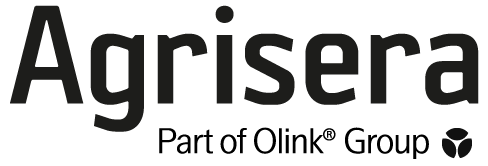Anti-BoNT-A | Botulinum Neurotoxin A (Heavy Chain Binding Domain)
AS20 4465 | Clonality: Polyclonal | Host: Chicken | Reactivity: Botulinum Neurotoxin A
- Product Info
-
Immunogen: Botulinum Neurotoxin Type A (Heavy Chain Binding Domain) isolated from Clostridium botulinum and purified.
Host: Chicken Clonality: Polyclonal Purity: Immunogen affinity purified in PBS pH 7.2. Contains 0.075% sodium azide. Format: Liquid Quantity: 0.1 mg Storage: Store at -20°C; make aliquots to avoid repeated freeze-thaw cycles. Please remember to spin the tubes briefly prior to opening them to avoid any losses that might occur from material adhering to the cap or sides of the tube. Tested applications: ELISA (ELISA), Western blot (WB) Recommended dilution: 1:10 000 (ELISA), 1:2000 (WB) Expected | apparent MW: 97 kDa - Reactivity
-
Confirmed reactivity: Botulinum toxin A heavy chain - Application Examples
-

Samples:
A - MW standards
B - Botulinum Neurotoxin Type A, 1 µg
C - Botulinum Neurotoxin Type A, Heavy Chain Binding Domain, 1 µg
D - MW standards E - Botulinum Neurotoxin Type A, reduced, 1 µg
F - Botulinum Neurotoxin Type A,Heavy Chain Binding Domain, reduced 1 µg
Samples were transferred to a PVDF membrane. Following blocking and washes, primary antibodies were applied in 1: 4000 dilution. Following incubation with a matching secondary antibody, the reaction was visualized using chemiluminescence according to manufacture's recommendation. - Additional Information
-
Additional information (application): For direct ELISA coating with 2 µg of Botulinium Toxin A is recommended combined with primary antibody dilution of 1: 10 000.
For Western blot 0.5 µg of non reduced holotoxin or heavy chains is recommended together with 1: 2000 dilution of a primary antibody. - Background
-
Background: Botulinum toxin is a toxin produced by the anaerobic, gram-positive, bacterium of the genus Clostridium (C. botulinum, C. butyricum, C. baratii and C. argentinense). These strains are widely distributed and can be found in soil and dust. Eight types of botulinum toxin are distinguished, named type A–H. Type A and B are capable of causing disease in humans (botulism) and have longest activity in vivo, and are also used commercially (BOTOX) and medically. Types C–G are less common; types E and F can cause disease in humans, while the other types cause disease in other animals. BotA is cleaved into two chains: heavy and light.
Alternative name: Bontoxilysin-A - Protocols
- Antibody Protocols
- Reviews:
-
This product doesn't have any reviews.

